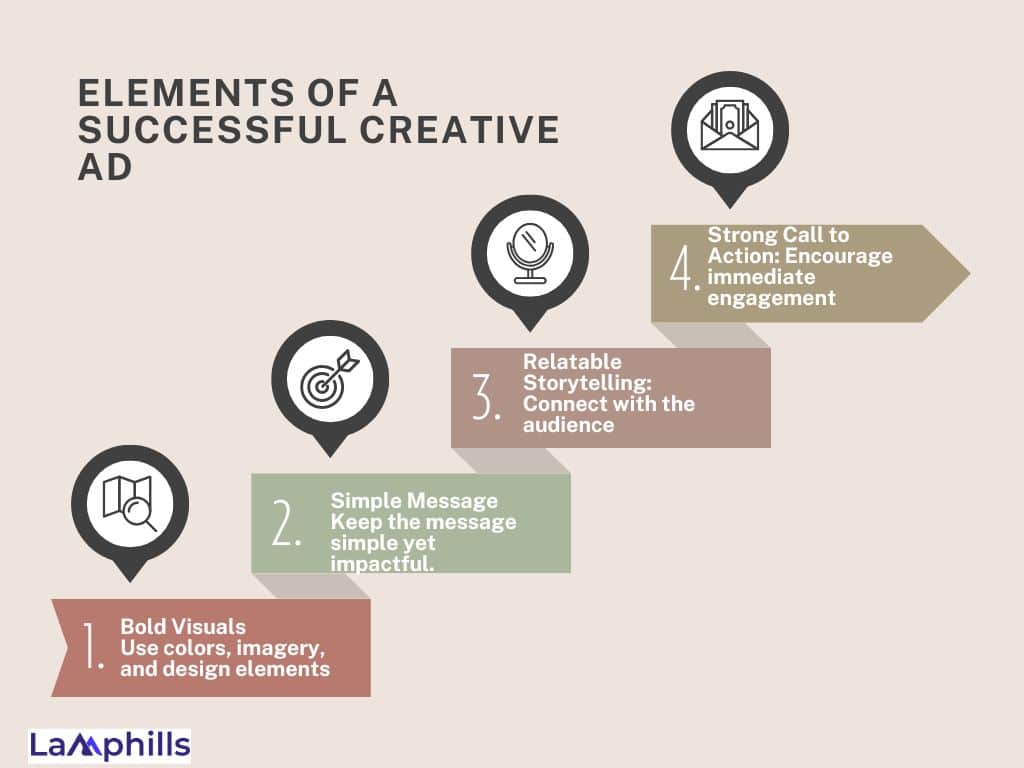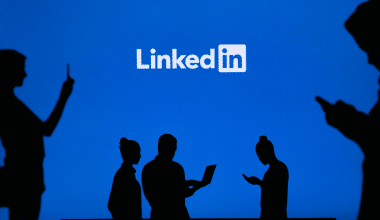Ever scrolled past an ad so bland you barely knew it was there? This is the issue at hand: how to create ads that make one actually stop, stare, and maybe share. Good advertising design can capture attention in a moment, whether it’s an ad on an enormous billboard or small digital screens. And if you’ve ever thought, “How do brands do that?” I’ll show you how creating eye-catching ads is done and walk you through a guide to types of advertising designs for brands. Let me walk you through the magic!
Key Points
- Advertising design combines visual communication and persuasive messaging to attract attention and encourage action, effectively promoting a brand’s product, service, or idea.
- Successful advertising features a captivating look and feel, a coherent message with a strong call-to-action (CTA), brand consistency, and insight into the target audience’s preferences and needs.
- Various formats exist, including print ads (magazines, flyers), digital ads (social media, online banners), outdoor ads (billboards, transit), guerrilla advertising (creative public placements), and direct mail (postcards, brochures).
- Effective advertising design requires a blend of creativity and strategy, ensuring that visuals and messaging not only catch attention but also resonate with the audience, fostering engagement and brand recognition.
Advertising Design
Advertising (as defined in the Encyclopedia Britannica)
Communication that involves putting out information to the public with the aim of persuading them to buy or use a product, service, or idea that is being communicated.
Design
To plan and make decisions about something that is being built or created.
Advertising Design: Now, let’s put them together!
Advertising design is visual communication that involves designing persuasive communication pieces for getting people attracted towards a business product, service, or idea. It uses art, graphics, and words to attract the attention of people and persuade them to do something.
So, for advertising design, just think of it as being able to come up with an outstanding poster to advertise your lemonade stand. Of course you want to make it look exceptional? Bright color combinations, funny fonts, and the picture of a tasty lemonade glass are what you choose. That’s advertising design!
Some examples of advertising design include:
- Highway billboards
- TV commercials
- Ads on your favorite video games or websites
- Flyers in your mailbox
- Logos on your favorite clothes or shoes
Consequently, the key concept of advertising design is to attract people’s attention, help them memorize the information, and in the end, it leads them to action!
Here’s an example:
Suppose a firm intends to sell a new model of sneakers. An advertising designer would create an ad with:
- A colorful picture of the sneakers
- Some catchy slogan like “Run Faster, Jump Higher!”
- Information about the benefits, like “lightweight and comfortable.”
- A call-to-action, like “Get Your Pair Now!”
The designer’s task is to make sure that the ad looks so attractive and persuasive that people feel compelled to purchase those sneakers.
This is the basic concept of advertising design!
The Role of Branding in Advertising Design
Advertising design isn’t just pretty pictures or catchy lines; in fact, it covers the art of creating visuals that, in every manner, communicate a brand’s message while convincing an audience. Amazing design captures attention and keeps it. It entices people into connecting with what they are seeing.
A good ad design effectively captures creativity and strategy. This leads to the next question: What constitutes an ad design as “creative,” and how would that be any different from any other ad?
Elements of Creative Advertising Design
Every powerful ad contains a few key elements that make the ad go from ho-hum to unforgettable:
1. Look and Feel: First impressions count! Take into consideration colors, imagery, and layout for the look and feel. Each element must project the brand identity and capture the viewer’s attention in an instant.
2. Clear Message & CTA: There should be a bold and clear message with an eye-catching call-to-action—”Shop Now,” “Learn More,” or even “Swipe Up”—directing users to what action they should take next.
See: Best Ways to Use Product Recall Coverage to Strengthen Your Brand’s Reputation
3. Brand Consistency: The ads need to ensure alignment with the look, voice, and values of the brand. Consistency across all ads fosters trust and recognition with their audience.
4. Target Audience Insight: Understand who your audiences are inside and out. It’s about designing with the viewer in mind, taking into consideration insight on what they love, need, or find humorous.
Types of Advertising Design
Let’s dive into the types of ad design that brands use to make an impact.
#1. Print Ad Design
Printed ads—magazines, newspapers, and flyers—might be so old-school, but they still work. Here, it is all about impact: bold fonts, striking colors, and an appealing layout that would make people stop flipping and actually read.
The term “print advertising” describes printed ads that are frequently found in periodicals and newspapers. However, this category also includes additional printed items, such as flyers, directories, and brochures. Businesses can target customers in a specific area by placing ads in local newspapers, either in the classifieds section or throughout the publication.
Brands may look for magazine advertising chances to reach a more specific audience. Specialty publications can assist a business in reaching a particular demographic. Because of the full-page chances that allow for more color and high-production photos than newspaper ads, magazine advertising can also provide customers with a better visual experience.
#2. Digital Ad Design
Think of stuff like social media posts, online banners, and videos. With digital advertising, brands have the possibility to experiment with text, images, video, and even such interactive elements as polls or links.
#3. Outdoor Ad Design
This category includes billboards, transit ads, and signage. These have to be noticed and registered ads! Because viewers have only a few seconds to look and understand what they are seeing, outdoor ads have to be bold and to the point.
#4. Guerrilla Advertising Design
Guerrilla advertising strategy is less common, traditional and is normally a low-cost promotional tool with some form of creativity incorporated. A common stunt in this category is ambient advertising, where a firm places ads in public areas but innovatively. For instance, instead of placing an ad on a bus stop, a brand can use graffiti over concrete advertising showing the services offered by the business.
Sometimes guerrilla marketing creates an expectation of interaction or participation from the public. For instance, the advertisement may ask people to take a picture with the ad and share it with others on the social platform with a specific tag. Which is why companies employing guerilla advertising seek profile visibility—to grab people’s attention and engage with the material. A word-of-mouth ad can, therefore, perhaps be effective and less costly than others in creating awareness of the pertinent companies.
Guerrilla ads take that one step more—by placing the advertisement in places people don’t expect. Picture a street with a 3D ad installation. Or even just a sticker on your coffee cup. Creative, memorable.
#5. Direct mail ad design
Creating visual and written content for promotional items sent directly to customers or businesses. Postcards, brochures, and catalogs are some examples.
You can target particular postal codes to send your direct mail to particular neighborhoods, or you can buy database lists from other companies to target their clients or members. Both large brands and small, local businesses still utilize these kinds of advertisements today. Spend some time learning about the various mailer sizes and shapes and how to acquire the best design for each if you choose to use direct mail.
To create a direct mail brochure for Lamphills as an example of effective ad design, let’s go with a tri-fold layout focused on key areas. Here’s a digital example:
Front Cover: Lamphills
- Brighten Your World with Quality Lighting Solutions!
- Include an image of stylish, well-lit spaces or products)
Inside Left Panel: Why Choose Lamphills?
- Quality: Only the best materials for durability.
- Style: Designs to match every aesthetic.
- Sustainability: Energy-efficient solutions.
Note: Emphasize the unique qualities that make your brand stand out!
Inside Center Panel: Featured Products
- Classic Lamps
- Elegant, timeless pieces for any room.
- Modern Fixtures
- Minimalistic yet impactful designs.
Tip: Include vibrant photos and brief product descriptions.
Inside Right Panel: How to Order?
- Online: Visit lamphills.com
- Phone: Call us at (555) 123-4567
- In-Store: Find a store near you.
Note: Include a QR code leading to the website.
Back Panel: Special Offer for First-Time Buyers
- 15% off your first purchase!
- Use code: LAMPHILLS
This brochure design makes essential information easy to digest and visually engaging.
#5. (Social Media Advertising Design) SMA Design
Overall, social media ads require attracting eye-catching attention, with the best performances. Social media ads should be highly engaging, with scroll-stopping visuals. Brands prefer releasing their advertisements in various formats, such as short videos, carousel images, or GIF format, in order to capture the attention of the target audience in the fast motion of social media feeds.
For instance, a fashion brand will apply a carousel to provide different views of a new product and give a brief description next to every picture. This makes the users keep on swiping and active.
#6. Video Advertising Design
Video ads can convey lots of information and hence can be useful when the brand is interested in telling a story of product usage or telling an emotive advert. They can be in the form of small bits to share on social media platforms or better stories fit for YouTube or television.
To put it differently, video ads are advertisements that contain motion, sounds, images, and text. These can be seen on YouTube (at least the ones that you didn’t fast forward), on social networks, or on television. Either way, when you have to design a video advertisement, the task is to create an advertisement that will be so interesting that nobody will fast-forward past it.
You have to be more provocative, funny, smarter, and, most importantly, convey your message within the shortest time possible if you intend to produce an interesting video ad that people will not forward. See our ultimate video marketing guide for the most comprehensive guide on all things about creating video ads.
Watch the short video ad below to see what video ad looks like
Creative Advertising Design
What pops into your head immediately at the mention of creative advertising design? Maybe a catchily worded billboard, an unforgettable commercial, or even a daring print ad. For a second, visualize an ad entirely different, stopping you in your tracks, making you smile, ponder, or maybe even burst out laughing. That is what creative advertising is! And today, I’ll take you through the art of creative advertising design and how it is used to wow the public by brands.
What is Creative Advertising Design?
It is all about creating unique, striking, and shining visuals and messages that make the ad remembered. It is an art entwined with strategy, a hook to keep the viewer emotionally riveted. From captivating taglines to striking images, every little thing in a creative ad is designed to go deeper into its targeted audience and eventually get them connected with a particular brand.
Here’s a detailed template for a Google Slides-style presentation that shows how brands and businesses can use creative advertising design to drive sales and boost productivity.
Why is creativity important in advertising?
Living in an overexposed world, creativity is that X-factor that makes brands stand out. It’s not just creating ads that look good; rather, it’s all about making ads that feel great and have something really valuable to say. David Ogilvy, the “Father of Advertising” says and I quote
“If it doesn’t sell, it isn’t creative.”
Creativity should give reason to the benefit of the product and grant a new perspective.
Elements of a Successful Creative Ad

Creating a memorable ad involves several key elements:
- Bold Visuals: Use colors, imagery, and design elements that capture attention.
- Simple Message: Keep the message simple yet impactful.
- Relatable Storytelling: Connect with the audience’s emotions.
- Strong Call to Action (CTA): Encourage immediate engagement, whether it’s visiting a website, making a purchase, or sharing the ad.
Creative Advertising Design Tips
| Tip | Why It Works |
| Keep It Simple | Simplicity cuts through the noise and makes the message memorable. |
| Use Humor (if Appropriate) | A funny ad catches attention and is more likely to be shared. |
| Be Bold with Colors | Eye-catching colors can help your ad stand out in any context. |
| Align with Brand Values | Stay consistent with the brand’s message to build trust and recognition. |
| Test and Iterate | Get feedback on different versions and make improvements. |
After all, creative advertising is not just the process of selling a product, but also about reaching the audience. A good ad makes the target consumers feel something, change their mindset, or even crack a smile. And in a world where everyone wants to cram their ads into your head, being memorable is often more than half the way towards victory.
Therefore, the next time you are trying to come up with an idea for an ad, do not limit yourself to ideas centered on merely selling products. Aim to create an experience.
Is Advertising Design the Same as Graphic Design?
Advertising design is the creation of artwork that is explicitly intended to promote items or services. Graphic design is a broad phrase that encompasses anything from websites to posters and candy wrappers. Advertising design falls within the scope of graphic design and is aimed at selling a brand.
What Is a Concept in Advertising Design?
The creative concept tells the story behind the messages in an ad. Characters and aspects of advertising serve to convey a memorable and appealing message, resulting in desirable behavioral responses from the target market.
What Is Advertising Design Also Known As?
The interface between design and marketing is advertising design. It describes the visual art produced especially for commercials, or just “ads.” Although ad design and graphic design advertising is occasionally applied interchangeably, ad design is unique in that its only objective is to promote goods and services.
Bringing It All Together
It takes more than a thoughtful design, clear messaging, and a bit of creativity to make an ad really pop. And when it’s done right, it’s memorable. Whether you’re designing for digital or print, the same necessities concerning good advertising design apply. And remember, the next great ad starts with knowing one’s audience, then refining that message, and creating a visual that sticks. Thank you for reading, and may your creative designs always be head-turners!
Related Posts
- How to Use Snapchat Ads Manager: Tips and Best Practices
- Facebook Ads to Inspire Your Next Campaign (+ Tips on Creating One)
- How to Create Engaging Snapchat Ads: Best Practices and Examples
- Threads Advertising 101: A Complete Guide to Boost Your Campaigns






